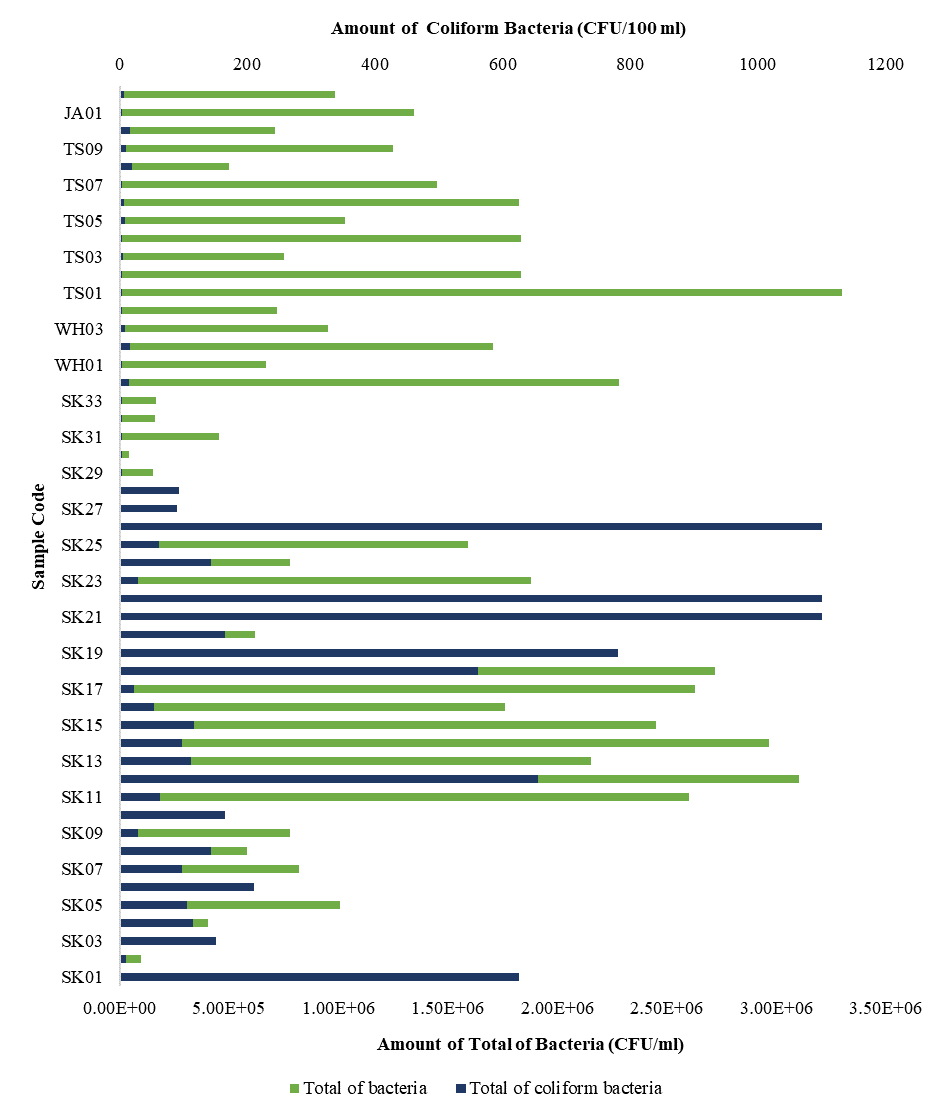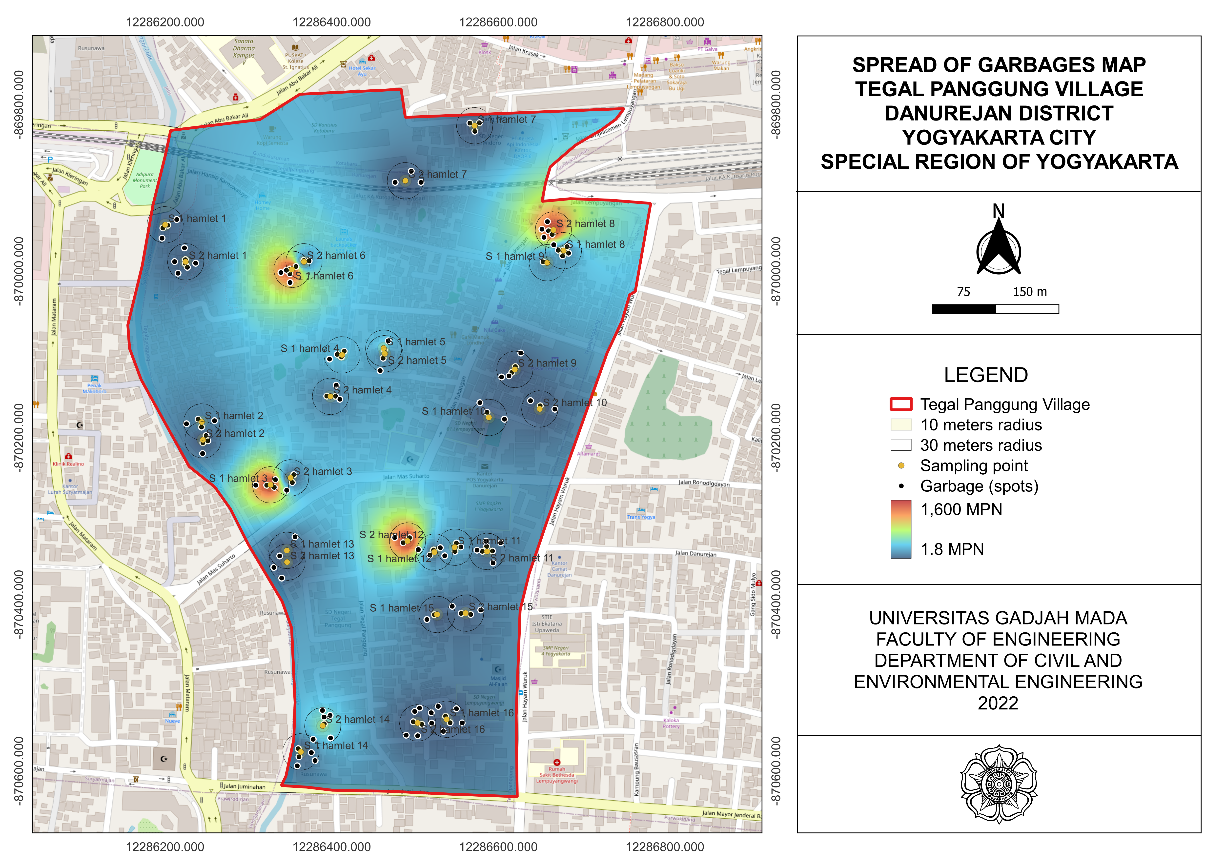The Role of Sanitarian and Social-Cultural Factors in Promoting the Open Defecation-Free (ODF) Village
Downloads
Agustiyaningsih T, Kurnia AD, Larasati RY. Hubungan Pengetahuan tentang Jamban Sehat dan Lingkungan Fisik dengan Perilaku Buang Air Besar Sembarangan. Dunia Keperawatan Jurnal Keperawatan dan Kesehatan. 2020;8(2):130-139. http://dx.doi.org/10.20527/dk.v8i2.7960
Ministry of Health of Republic Indonesia. Community Based Total Sanitation. Jakarta: Ministry of Health of Republic Indonesia;2019. http://monev.stbm. kemkes.go.id/monev/
Desmawati, Ari Pristiana OH. Hubungan Personal Hygiene dan Sanitasi Lingkungan dengan Kejadian Skabies DI Pondok Pesantren Al Kautsar Pekanbaru. J Online Mahasiswa. 2015;2(1):628– 637. https://jom.unri.ac.id/index.php/JOMPSIK/ article/view/8336
Sidhi A, Raharjo M, Dewanti N. Hubungan Kualitas Sanitasi Lingkungan dan Bakteriologis Air Bersih terhadap Kejadian Diare pada Balita di Wilayah Kerja Puskesmas Adiwerna Kabupaten Tegal. J Kesehatan Masyarakat. 2016;4(3):665–676. https://ejournal3.undip.ac.id/index.php/jkm/article/ viewFile/13480/13036
Nugraha MF. Dampak Program Sanitasi Total Berbasis Masyarakat (STBM) Pilar Pertama Di Desa Gucialit Kecamatan Gucialit Kabupaten Lumajang. J Kebijakan dan Manajemen Publik. 2015;3(2):44–53. http://journal.unair.ac.id/filerPDF/ kmp62b069aeb2full.pdf
Rahmadani RD, Ridlo IA. Perilaku Masyarakat dalam Pembuangan Tinja Ke Sungai Di Kelurahan Rangkah , Surabaya. Indonesian J Health Promotion and Health Education. 2020;8(1):87–98. http://dx.doi.org/10.20473/jpk.V8.I1.2020.87-98
Sukma H, Mursid, Nurjazuli. Hubungan Pengetahuan, Sikap Bab, Dan Kepemilikan Septic Tank Dengan Status ODF (Open Defecation Free) di Kecamatan Candisari Kota Semarang. J Kesehatan Masyarakat. 2018;6(6):143–149. https://ejournal3. undip.ac.id/index.php/jkm/article/view/22169
Ganing A, Hairuddin MC. Perilaku Masyarakat Terhadap Sanitasi Total Berbasis Masyarakat di Kabupaten Majene. J Kesehatan Manarang. 2016;2(2):66–71. https://doi.org/10.33490/jkm. v2i2.17
Glanz K, Rimer BK, Viswanath K. Health Behavior and Health Education 5th Edition Theory, Research, and Practice. San Francisco: Jossey-Bass Books;2008.
Qudsiyah WA, Pujiati RS, Ningrum PT. FaktorFaktor yang Berhubungan dengan Tingginya Angka Open Defecation (OD) di Kabupaten Jember (Studi di Desa Sumber Kalong Kecamatan Kalisat). J Pustaka Kesehatan. 2015;3(2):362–369. https:// jurnal.unej.ac.id/index.php/JPK/article/view/2679
Apriyanti L, Widjanarko B, Laksono B. Faktor-faktor yang Mempengaruhi Pemanfaatan Jamban Keluarga di Kecamatan Jatibarang Kabupaten Brebes. J Promosi Kesehatan Indonesia. 2018;14(1):1-14. https://doi.org/10.14710/jpki.14.1.1-14
Wijayanti AK, Widagdo L, Shaluhiyah Z. FaktorFaktor yang Berhubungan dengan Buang Air Besar di Jamban di Desa Gunungsari Kecamatan Pulosari Kabupaten Pemalang. J Kesehatan Masyarakat. 2016;4(1):450–460. https://ejournal3.undip.ac.id/index.php/jkm/article/view/11855
Dwiana A, Herawaty L. Determinan Perilaku Buang Air Besar Pada Masyarakat Pesisir Di Kabupaten Buton Selatan. Berita Kedokteran Masyarakat. 2017;33(6):273–276. https://doi.org/10.22146/ bkm.23539
Samosir K, Ramdhan FS. Peranan Perilaku Dan Dukungan Tokoh Masyarakat terhadap Kepemilikan Jamban Sehat di Tanjungpinang. J Kesehatan. 2019;12(1):168–174. https://doi.org/10.32763/juke. v12i1.115
Kurniawati LD, Windraswara R. Faktor-Faktor Yang Berpengaruh terhadap Perilaku Kepala Keluarga dalam Pemanfaatan Jamban di Pemukiman Kampung Nelayan Tambaklorok Semarang. Public Healt Perspective J. 2017;2(1):72–79. https://journal.unnes.ac.id/nju/index.php/phpj/article/ view/10997
Meriantini NK. Hubungan Karakteristik Kepala Keluarga dengan Perilaku Buang Air Besar Sembarangan (BABS) di Wilayah Kerja Puskesma Sawan II Kabupaten Buleleng Tahun 2020. Skripsi. Denpasar: POLTEKKES Denpasar; 2020.
Kistanto NH. Transformasi Sosial-Budaya Masyarakat Indonesia. J Kajian Kebudayaan. 2018;13(2):169–178. https://doi.org/10.14710/ sabda.13.2.169-178
Wihadanto A, Barus B, Achsani NA, Bratakusumah DS. Analisis Karakteristik dan Penilaian Tingkat Kekumuhan Kawasan Permukiman ‘Kampung Braga' - Kota Bandung. J Region Rural Development Planning. 2017;1(2):132–144. https://doi.org/10.29244/jp2wd.2017.1.2.132-144
Central Statistic Agency. Social and Population. Jakarta: Central Statistic Agency of Indonesia;2019. https://www.bps.go.id/istilah/index
Ruhimat M. Tekanan Penduduk Terhadap Lahan di Kecamatan Sukaraja Kabupaten Sukabumi. J Pendidikan Geografi . 2016;15(2):59–65. https:// doi.org/10.17509/gea.v15i2.3548
Putra GS, Selviana. Faktor-Faktor Yang Berhubungan Dengan Kepemilikan Jamban Sehat di Desa Empakan Kecamatan Kayan Hulu. J Kesehatan Masyarakat Khatulistiwa. 2017;4(3):238–243. http://dx.doi.org/10.29406/ jkmk.v4i3.866
Febriani W, Samino, Sari N. Faktor yang Mempengaruhi Perubahan Perilaku Stop Buang Air Besar Sembarangan (BABS): Studi Pada Program STBM di Desa Sumbersari. Metro Selatan 2016. J Dunia Kesmas. 2016;5(3):121–130. http://ejurnalmalahayati.ac.id/index.php/duniakesmas/ article/view/467
Dewi CH, Mahara JA. Analisis Faktor Lingkungan terhadap Perilaku Buang Air Besar Sembarangan Masyarakat Desa Lermatang Kabupaten Maluku Tenggara Barat. J Info Kesehatan. 2019;9(2):139– 150. https://stikes-surabaya.e-journal.id/infokes/ article/download/98/49
Rochaida E. Dampak Pertumbuhan Penduduk terhadap Pertumbuhan Ekonomi dan Keluarga Sejahtera di Provinsi Kalimantan Timur. Forum Ekonomi. 2016;18(1):14–24. http://journal.feb. unmul.ac.id/index.php/FORUMEKONOMI/article/ view/42
Mardotillah M, Gunawan B, Soemarwoto RS, Raksanagara AS. Peran Faktor Pemungkin dan Penguat pada Akses Jamban Sehat Perkotaan. J Antropologi. 2019;20(2):165–178. https://doi.org/10.25077/jantro.v20.n2.p165-178.2018
Yulda A, Fajar NA, Utama F. The Effect of Internal and External Factors to Behavior to do Defecation on Latrine After the Triggering in Working Area of Tanjung Batu Primary Health Care. J Ilmu Kesehatan Masayarakat. 2017;8(2):109–116. https://doi.org/10.26553/jikm.2016.8.2.109-116
Mayor of Surabaya of East Java Province. Regulation of the Mayor of Surabaya No. 48 year 2016 about Position, Organizational Structure, Function and Job Descriptions, also Working Procedures of District Health Office os Surabaya. Local Government Secretary of Surabaya; 2016
Ministry of Health of Republic Indonesia. Regulation of Ministry of Health of Republic Indonesia No.3/ MENKES/2014 about Community Based Total Sanitation. Jakarta: Ministry of Health of Republic Indonesia; 2014. http://stbm.kemkes.go.id/app/ news/7558/permenkes-nomor-3-tahun-2014- tentang-stbm
Kurniawati RD, Saleha AM. Analisis Pengetahuan, Sikap dan Peran Petugas Kesehatan dengan Keikutsertaan dalam Pemicuan Stop BABS. J Ilmu Kesehatan Masyarakat. 2020;9(2):99–108. https://doi.org/10.33221/jikm.v9i02.527
Heranita L, Lubis NL, Moriza T. Faktor yang Mempengaruhi Perilaku Keluarga dalam Pemanfaatan Jamban di Pemukiman Desa Air Pinang, Kecamatan Simeulue Timur, Kabupaten Simeulue Tahun 2018. J Kesehatan Cehadum. 2019;1(3):15–27. http://www.jkc.puskadokesa.com/ jkc/article/download/27/11
2. Formal legal provisions to access digital articles of electronic journal are subject to the provision of the Creative Commons Attribution-ShareAlike license (CC BY-NC-SA), which means that Jurnal Kesehatan Lingkungan is rightful to keep, transfer media/format, manage in the form of databases, maintain, and publish articles.
3. Published manuscripts both printed and electronic are open access for educational, research, and library purposes. Additionally, the editorial board is not responsible for any violations of copyright law.
JKESLING by UNAIR is licensed under a Creative Commons Attribution-ShareAlike 4.0 International License.







































